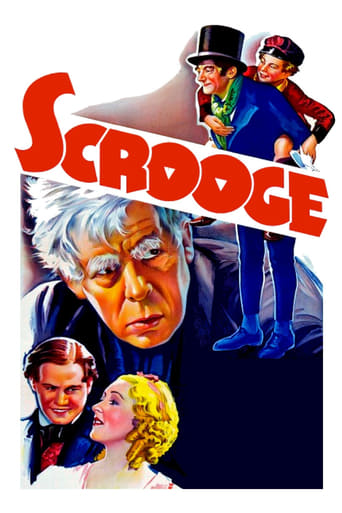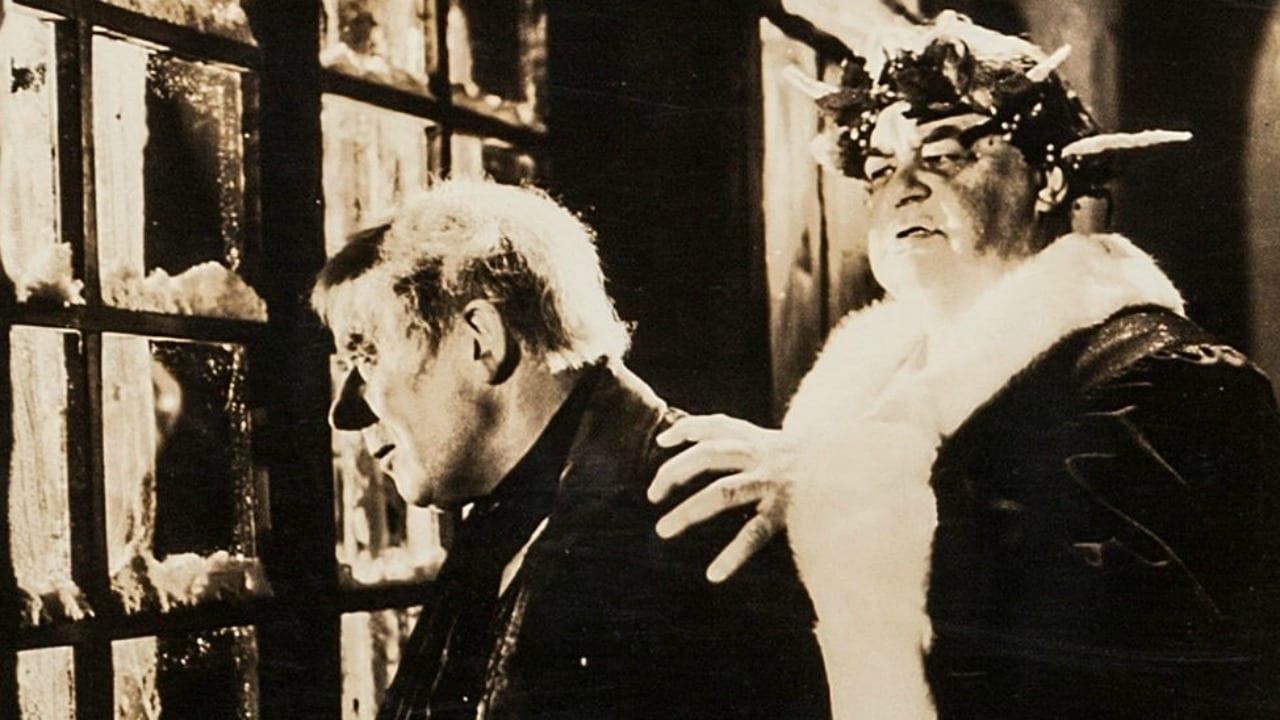frankdfleming
Scrooge (the 1935 version) is marked by good story-telling, a comfortable pace and workmanlike acting performances. Considering the 1935 production date, the cinematography and special effects are commendable.I enjoyed that it included scenes that typically aren't part of other productions. For example, there is a scene involving an extravagant banquet where scraps are literally thrown out the window to the poor gathered outside the kitchen preparation area. Additionally, you'll see Tim lying dead upon his bed which likely was a surprise and shock to audiences of the day.There were some disappointments as well including Marley's ghost and Bob Cratchit. Although Scrooge can both see and hear Marley's ghost, the viewer can only hear the ghost (who according to the cast list is The Invisible Man, Claude Rains himself in an uncredited role). The meeting between Scrooge and Marley is often one of the story's most powerful scenes and not letting the audience actually see Marley was a mistake. As for the actor playing Bob Cratchit, he seemed a bit too old for the part and failed to generate the sympathy so strongly felt for the character in other presentations.Overall though, for those who love the story, this is a presentation that you can enjoy.
marquisdeposa
Some companies (Westlake Entertainment being one) have the complete version. 85% of the DVDs are the shortened 63 minute film. But the extra 15 minutes or so add some very touching moments, especially in the Christmas yet to come scene at the Cratchits. The editing process of the shortened version leaves gaps and unexplained situations. One is that Scrooge cuts his nose while shaving-waiting for the poulterer to bring the turkey for the Cratchits. The is why he has a cross of plaster tape on the tip of his nose. And of course the very ending of the film with Scrooge going to church is a nice touch. An excellent version and one of my top 3 choices of this beloved classic.
smerph
If there's a lesson to be learned from the countless adaptations of A Christmas Carol, it's that the makers should stick to the text as closely as possible. Dickens barely wasted a word in his novella; it being a perfectly judged, perfectly paced bit of fiction.This adaptation takes a few wrong turns. It takes far too long before we get to the actual haunting, with the first 30 minutes being positively meandering. There's also a perfunctory sequence, featuring none of the main characters, where the King is celebrated. Maybe this kind of thing pleased the masses back in the thirties, but it does make the opening act a bit of a slog.One would hope that things would get back on track when Jacob Marley appears. Unfortunately, Jacob Marley doesn't appear at all; he's a rather unimpressive voice-over. It's an odd choice; as if the makers aren't confident enough to give us a character design that will work for us.Unfortunately, the sequence following this isn't much better. The visit from The Ghost of Christmas Past is done and dusted in less than 5 minutes (I'm not exaggerating). There's nothing of Scrooge of a boy, no mention of Fezziwig and we only really see the break-up of his relationship with Belle (and nothing of the good times Scrooge shared with her). This is a major misstep; as it fails to adequately give us Scrooge's backstory. Considering what *is* included in this adaptation, it's baffling that such a key segment was skipped over. I'm wondering if it was abridged so that they'd be no need for other, younger actors to play Scrooge, but that seems like an unnecessary compromise.The Present and Yet To Come sequences fare better, and the conclusion to the story is really rather good as adaptations of the novella go. However, the damage has already been done.It's a big shame as the cast are fine. Seymour Hicks may be a touch too shabby for my tastes as Old Scrooge, but he's able to give us a decent contrast in his performance (even if his redemption is far too quick, and seems almost complete after a quick glimpse at his past).In summary, this is probably on an even footing with the Reginald Owen offering from just three years later (1938). Both have as many flaws as aspects to recommend, but both are worth a watch to aficionados of the classic story.
SimonJack
Is it even possible that there could be a bad production of "A Christmas Carol?" The beloved tale of greed and meanness converting to kindness and charity is the most famous of all modern Christmas holiday stories. And the Charles Dickens classic has been performed thousands of times on stage and over the air, and many times on film. That answers the question I posed above. With such a great story and any effort to produce it well, a bad "Christmas Carol" production isn't likely to occur. But, surely, some must be better than others. For purposes of comparing film versions, what remains for us to be able to judge them is the differences in the script, in the technical production, in the cast and in the performances of the individual actors. This "Scrooge" is the first production of the Dickens classic on sound film. Its emphasis is heavily on the main character. And, for that reason, it is a good film to keep in a library, along with two other later versions. That's because of who plays Scrooge. Seymour Hicks was Ebenezer Scrooge before movies were made. That is to say, he was the actor known and renowned for his many performances of Scrooge on stage. He first played Scrooge in 1901. He specialized in the role, and as a young actor bore the criticism of not looking old enough. Hicks was an accomplished actor of comedy and drama. He is credited with having done thousands of performances of "A Christmas Carol" over the years. He made the first silent film, "Old Scrooge" in 1913. Hicks was the 13th English actor to be knighted. He was a prolific writer for the stage, with 64 plays and productions to his credit. He wrote comedy musicals for him and his wife to perform. His plays were so successful that he was able to build two theaters. The first, in 1905, was the Aldwych Theatre. In 1906, he built the Seymour Hicks Theatre – now called the Gielgud Theatre. Jerome Kern wrote the musical score for his first successful musical comedy – "The Beauty of Bath," in 1906. Hicks helped discover Alfred Hitchcock. During both world wars, Hicks entertained Allied troops in France and elsewhere. He twice received the French Croix de Guerre. In this production of the Dickens Classic, Hicks was 64 years old, and he naturally looked for the part. He surely is the darkest of all the Scrooge roles on film. He seems to be a sinister character who relishes his tyrannical nature. This film has the dark trappings of early films all around him. They add to the heaviness of the scene. But they also haze over the fringes of scenes and people. This film is 78 minutes in length. While Scrooge is the main character of the Dickens tale, his conversion comes about by what the spirits show him of other people. And this film doesn't develop those enough to give the story its full impact. Without that, and with the Hicks' Scrooge so hardened in his ways, it's not as convincing when his heart changes. The production values of the old print I have on DVD are not very good. Still, it is a worthy part of a Dickens movie collection for this early rendition of Ebenezer Scrooge by one of the early English actors to be known for the role.



 AD
AD



